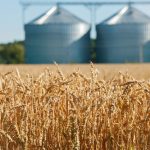How to Properly Store Crops after Harvest in Excessive Heat
October 6, 2023 5:32 pm Leave your thoughts Properly storing crops after harvest is essential to ensuring their longevity and quality. However, storing crops in excessive heat poses unique challenges that require extra attention and care. In this blog post, we will explore some effective strategies for properly storing crops in high temperatures, allowing you to preserve their freshness and nutritional value.
Properly storing crops after harvest is essential to ensuring their longevity and quality. However, storing crops in excessive heat poses unique challenges that require extra attention and care. In this blog post, we will explore some effective strategies for properly storing crops in high temperatures, allowing you to preserve their freshness and nutritional value.
1. Choose an Appropriate Storage Location:
When storing crops in excessive heat, it is crucial to select a cool and well-ventilated storage area. Avoid areas exposed to direct sunlight, such as south-facing walls or windows. Instead, choose a location that provides insulation from the heat, such as a basement or root cellar. If these options are not available, consider using shade cloths or installing proper insulation in your storage area to minimize heat transfer.
2. Harvesting and Handling Techniques:
Proper harvesting and handling techniques play a vital role in preserving the quality of crops. During hot weather, it is advisable to harvest crops early in the morning or late in the evening when temperatures are relatively cooler. This helps to minimize heat stress on the crops and prevent wilting. Additionally, it is important to handle the crops gently to avoid bruising or damaging them, as this can lead to accelerated spoilage.
3. Pre-Cooling:
Pre-cooling freshly harvested crops is crucial for maintaining their quality, especially in high temperatures. Immediately after harvest, immerse the crops in cold water to lower their temperature and remove field heat. For leafy vegetables, such as lettuce or spinach, you can place them in ice baths or use hydro-cooling techniques to effectively reduce their temperature. This process helps to slow down metabolic activity and prolongs the shelf life of the crops.
4. Proper Packaging:
Choosing the right packaging materials is essential for storing crops in excessive heat. Opt for packaging materials that provide insulation from the heat and prevent moisture loss. Vacuum-sealed bags or containers with airtight seals can help create a protective barrier against external heat and humidity. Additionally, consider using packaging materials that are resistant to light, as exposure to sunlight can accelerate the degradation of crops.
5. Temperature and Humidity Control:
Maintaining proper temperature and humidity levels is crucial for preserving the freshness of crops. In high temperatures, it becomes even more important to ensure that the storage area is adequately cooled. Use fans or air conditioning if possible to maintain a cool and dry environment. Monitor the temperature regularly, and make adjustments as needed to prevent heat build-up. Additionally, keep the humidity levels in check, as high humidity can promote mold and fungal growth.
6. Rotate and Inspect Regularly:
Regularly rotating and inspecting stored crops is necessary to prevent spoilage and ensure quality. Rotate the crops by using the “first-in, first-out” (FIFO) method, where older crops are used or sold first to prevent spoilage. Inspect the crops for signs of deterioration, such as mold growth, wilting, or discoloration. Remove any spoiled crops immediately to prevent them from affecting the remaining ones and to maintain overall storage conditions.
7. Proper Air Circulation:
Good air circulation is essential for maintaining the quality of stored crops. Ensure that there is sufficient space between the stored crops to allow air to circulate freely. Avoid overcrowding the storage area, as this can lead to heat pockets and increased humidity. Use shelving or pallets to elevate the crops and create airflow underneath. Regularly clean the storage area to remove any dust or debris that could impede air circulation.
Conclusion:
Storing crops after harvest in excessive heat poses unique challenges that require specific precautions. By carefully selecting an appropriate storage location, employing proper harvesting and handling techniques, pre-cooling the crops, using the right packaging materials, controlling temperature and humidity, rotating and inspecting regularly, and ensuring proper air circulation, you can effectively store your crops and maintain their freshness, nutritional value, and extended shelf life even in high temperatures. Remember, proper storage practices are essential to make the most of your hard work and ensure you can enjoy the harvest for months to come.
Got Questions? Let Us Help!
Welcome to M.B. McKee Company, Inc. M.B. McKee Company, Inc. has been serving our local community of Lubbock since 1943. Locally owned and family operated, we provide great customer service and solutions for ongoing issues. With over 70 years of experience, our products, services, and engineering will always exceed your expectations. Our products include bearings, belts, chains, conveyor systems, gearing, lifts, motors, drives, product separation, tools, valves, and fittings. Our engineering division also provides general formulas, NEMA motor frames, elevator legs, screw and belt conveyors, lift charts, components from Baldor and Flexco, and various interchangeable parts. Contact us today to learn more about what we can do for you!
Categorised in: Crops
This post was written by admin

